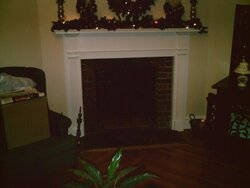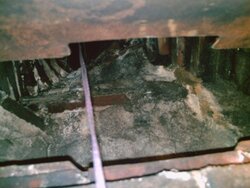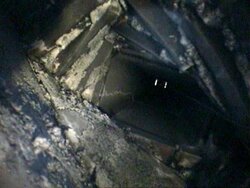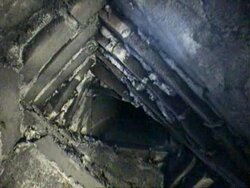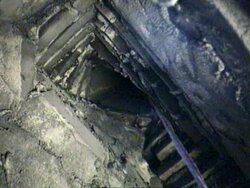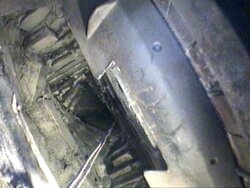I'm still trying to figure out what to do for a liner.
It's a 1940s home with an interior flue and I'll be putting a small insert into the brick fireplace. The flue is 8x12 clay tiles but they start about 3 feet above the firebox. The 3 foot unlined section also has a 45 degree twist (like a drill bit) in it to accommodate the corner fireplace. The distance from the top of the stove to the top of the chimney is 20.5 feet.
That's where my dilemma is. I can't use a 6" round SS insulated liner because it won't fit. If I go with a 5x7 oval liner, how will it handle the chimney twist? I've never handled stainless liners or the wrap insulation. If I "funnel-ize" the lower end of the liner and drag/push it through the twist is the insulation wrap strong enough to hold up without shredding or tearing? Is an oval liner flexible enough to be twisted that much without the seams breaking?
Would I be better off using a 6" round liner and bagged insulation: http://www.chimneylinerdepot.com/store/comersus_viewItem.asp?idProduct=57
Dilemma 2: The chimney sticks out 22" above the roof peak so I'm 14 inches short of the 3 foot rule. What's the best way to handle that 14 inches?
Kirk
PS I tried to show the twist on the right photo. Sorry for the bad quality. I should have some better ones soon.
It's a 1940s home with an interior flue and I'll be putting a small insert into the brick fireplace. The flue is 8x12 clay tiles but they start about 3 feet above the firebox. The 3 foot unlined section also has a 45 degree twist (like a drill bit) in it to accommodate the corner fireplace. The distance from the top of the stove to the top of the chimney is 20.5 feet.
That's where my dilemma is. I can't use a 6" round SS insulated liner because it won't fit. If I go with a 5x7 oval liner, how will it handle the chimney twist? I've never handled stainless liners or the wrap insulation. If I "funnel-ize" the lower end of the liner and drag/push it through the twist is the insulation wrap strong enough to hold up without shredding or tearing? Is an oval liner flexible enough to be twisted that much without the seams breaking?
Would I be better off using a 6" round liner and bagged insulation: http://www.chimneylinerdepot.com/store/comersus_viewItem.asp?idProduct=57
Dilemma 2: The chimney sticks out 22" above the roof peak so I'm 14 inches short of the 3 foot rule. What's the best way to handle that 14 inches?
Kirk
PS I tried to show the twist on the right photo. Sorry for the bad quality. I should have some better ones soon.


